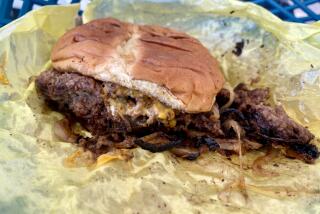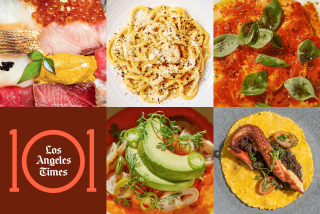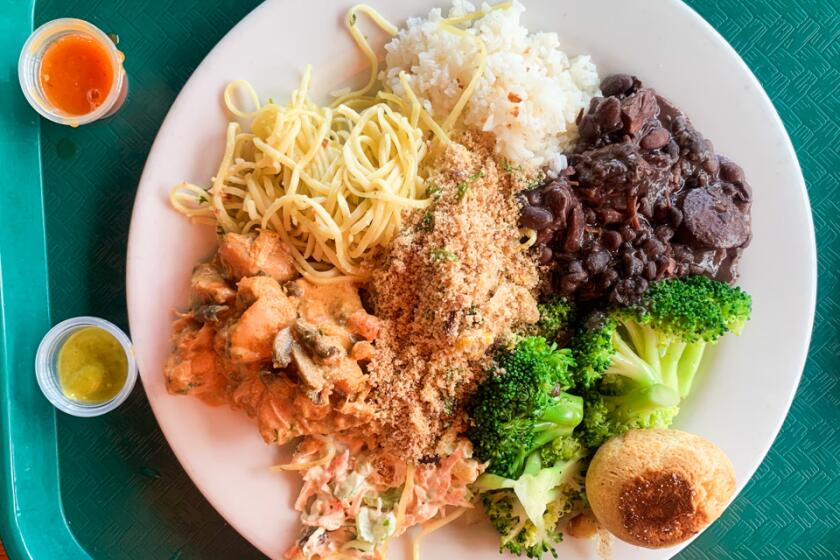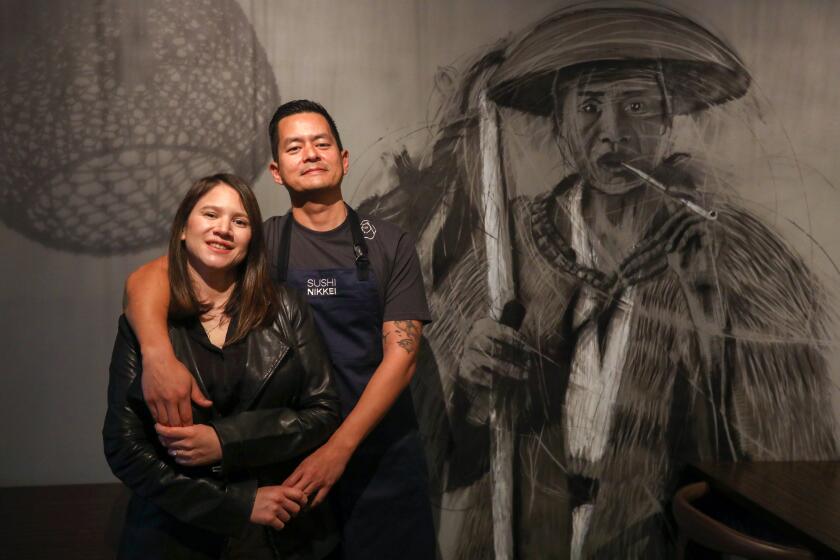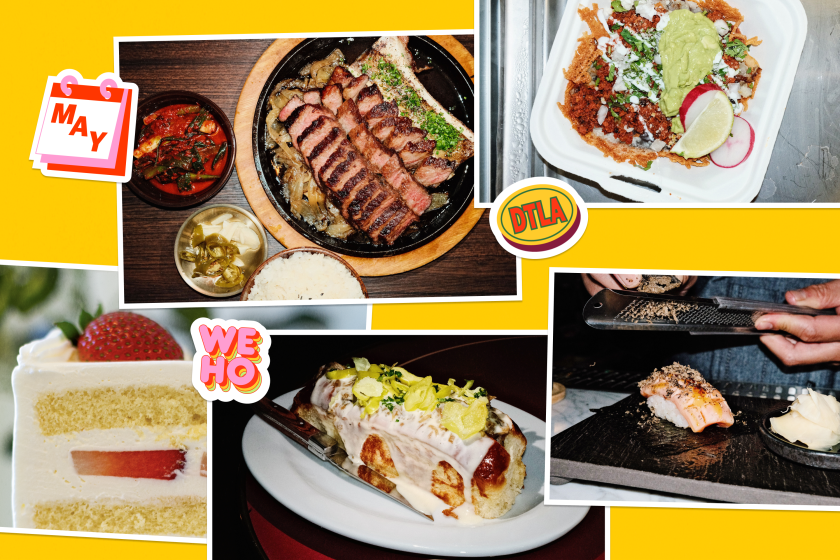MOM FOOD : Remembering the women who shaped our tastes. The recipes are the least of it. : We Remember Mama : Cooking Between Scribbles
When I was growing up, my mother had no ordinary stove, but a deluxe mud-brown industrial model, the kind with special novelty features, each with its own descriptive name. The In-A-Top-Broiler, for instance, was a combination pancake griddle/gas-flame toaster, and the Soup Well, a deep, round cavity behind the right burner, which my mother never figured out how to work. Most of the gadgets were too baffling to operate. But my mother deserved her shot at such modern timesavers; she was raising four children and had a writing career that was swallowing her attention span whole.
Her growing distraction was something my sisters and brother and I were reminded of on mornings when we watched the In-A-Top-Broiler incinerate our breakfast. It was with loving care that she would crank up the griddle top, place the four or five pieces of bread in the broiler pan, flip the lid back down and wander over to the Formica counter to scribble notes to herself. Meanwhile, the toast was transformed into crunchy black Wasabrod.
I’ve often wondered why my siblings and I would always sit there, immobilized, waiting wordlessly for my mother to notice the gray smoke clouds pouring from cracks in the oven. Suburban sloth had something to do with it. But we also appreciated the chance to witness my mother’s beautiful optimism at work. “Darn!” she’d wail as she extinguished the giant red-orange fireball. It was as if she believed that each new day bore fresh opportunities for her In-A-Top-Broiler to perform correctly.
Or maybe it goes back to her own childhood. When she was growing up, it was her responsibility, after she came home from school, to finish cooking the soup that her mother had left on the stove before going to work. But street baseball was always more interesting to my mother in those days than perfecting her domestic skills. Every day while she played outside, the boiling broth would reduce down to a quarter-inch of smoldering sludge. And every day, before her mother got home, she’d revive the mess with as much water as it took. “No one ever said anything about how bad it tasted,” she says whenever she tells the story. I’ve always imagined that my grandparents’ silence taught her something about culinary expectations.
How else could I rationalize the lunch bag she presented to me every morning? Most elementary school children are self-conscious about what they bring to school to eat. Just like clothing, a bag lunch is something that is completely determined by your mother but somehow ends up being an important reflection of your own personality.
Let’s just say that I must have come off as a Child of the Future. For one thing, my mother was environmentally aware before it was fashionable. Instead of buying the specially merchandised pastel pink or yellow sacks that other children carried, my mother recycled huge, wrinkled grocery bags, rolling down the tops. She didn’t have much use for wax paper packets, either.
Maybe she felt that food, like fine wine, needed to breathe, because she’d toss in a handful of potato chips and let them settle like fall leaves on the bottom of the bag, blanketing a couple of peeled carrots, an apple and a dry peanut butter-on-rye-bread sandwich that was loosely swathed in a white napkin. My lunches taught me a lesson about individuality: What other child had the distinction of carrying something to school that looked like a grown-up-sized clutch purse and sounded like a rattling birthday pinata ?
It wasn’t that my mother didn’t care about cooking, I think she just couldn’t muster the enthusiasm for such a solitary household task. After those long hours alone in front of her typewriter, she ached for someone to talk to. Dinner always improved in direct proportion to how much company she could round up. I still remember coming home from school to find my mother laughing with a tableful of strangers, an assembly line of women she’d hired to help her turn dried corn husks, wet masa and spicy beef filling into batches of tiny tamales .
Having been raised in the Jewish-Mexican neighborhood of Boyle Heights, she was well versed in the taco stands of Brooklyn Avenue. But she was equally familiar with her grandmother’s Orthodox Jewish food-- matzo balls as weightless as dandelion fluff floating in the clearest of chicken broths, airy logs of braided homemade challah and sweet poppy seed cookies. My mother was a woman born to fuse the very best of both cuisines.
If she had one true bicultural masterwork, it would be this: She’d boil three pounds of boneless chuck in a caldron of water, then make a barley mushroom soup from the rich broth and ropa vieja from the tender meat. Literally translated as “old clothes,” ropa vieja is shredded beef simmered with onions, skinned tomatoes and Anaheim and Serrano chiles.
One of life’s sad inconveniences was discovering how difficult it is to find great ropa vieja outside of my mother’s kitchen. I am always ordering it at restaurants only to find it too bland, or too vegetabley or made with a particularly fatty cut of meat. But when it is delicious, it begs to be served as my mother would--ladled onto a warm corn tortilla and covered with shredded lettuce and a crisp, cold salsa fresca.
It has been 19 years since I moved out and had easy access to my mother’s refrigerator. For the last decade we have shared the same profession. And sometimes, when I find myself standing over my kitchen sink, eating my deadline meal from a takeout container, I have to wonder where she got all her energy.
ROPA VIEJA
4 Anaheim chiles (chile verde)
3 Serrano chiles, optional
6 medium tomatoes
1 tablespoon oil
1 onion, diced
Shredded Beef
Reserved beef broth from Shredded Beef
Sprig cilantro, optional
Salt
Warm corn or flour tortillas
Shredded lettuce
Roast Anaheim chiles under broiler or fry in hot skillet until skin peels off easily. Repeat procedure with Serrano chiles. Cut open chiles, remove seeds and dice.
Scald tomatoes to remove skin. Remove seeds and dice tomatoes.
Heat oil in large skillet and saute chiles, tomatoes and onion until tender.
Stir in Shredded Beef. Simmer about 30 minutes, adding little reserved beef broth (to keep from drying) and cilantro. Season to taste with salt.
Serve with fresh, warm corn or flour tortillas and shredded lettuce. Makes about 6 cups.
Note: Mixture of green chiles, tomatoes and onion is basic salsa fresca. If desired, you can make double amount and place half (uncooked) in refrigerator to serve at table as extra salsa.
Shredded Beef
3 pounds boneless chuck
Dash salt
3 quarts cold water
1 onion
2 stalks celery with leaves
2 carrots
3 sprigs parsley
Combine meat, salt and water in large saucepan. Bring to boil and boil until foam forms. Skim. Reduce heat and add onion, celery, carrots and parsley. Simmer 2 1/2 hours, or until meat is very tender. Remove meat and cool to warm. Strain broth and reserve. Shred beef by hand until stringy. Cover with plastic wrap.
“When I use shredded beef as filling for beef tamales, tacos or taquitos, I use Ancho chiles and chile de Arbol.” --Harriet Rochlin
Shredded Beef Filling
4 dry Ancho chiles
3 dry chiles de Arbol
4 black peppercorns
1 clove garlic
Dash ground oregano
Shredded Beef
Beef broth
Cook chiles in water to cover about 30 minutes. Drain water and cool chiles. Scrape away as much skin as possible. Place in blender with 3 to 4 tablespoons fresh water, peppercorns, garlic and oregano. Puree. Pour chile mixture over Shredded Beef and cook about 30 minutes. Add little beef broth if it gets dry.
“To use the leftover rich, beef broth, I often serve a soup before the Ropa Vieja, especially in cool weather. I’ve made all kinds of soups with this broth, but I especially like this old-fashioned Jewish mushroom and barley.” --Harriet Rochlin
MUSHROOM AND BARLEY SOUP
10 cups beef broth
2 tablespoons barley
1 cup potatoes, cut in chunks
1 cup carrots, cut in chunks
1 cup onion, cut in chunks
1 cup celery, cut in chunks
1/2 cup fresh peas
1/2 cup chopped mushrooms
Few sprigs parsley or dill
Combine beef broth and barley in large soup pot and simmer 30 minutes. Add potatoes, carrots, onion, celery, peas and mushrooms. Simmer until tender, 20 to 30 minutes. During last 15 minutes of cooking, add parsley or dill.
Variation:
Serve soup with condiment bowls of red beans, salsa fresca, chopped raw onions and tostaditos (tortilla chips).
More to Read
Eat your way across L.A.
Get our weekly Tasting Notes newsletter for reviews, news and more.
You may occasionally receive promotional content from the Los Angeles Times.
